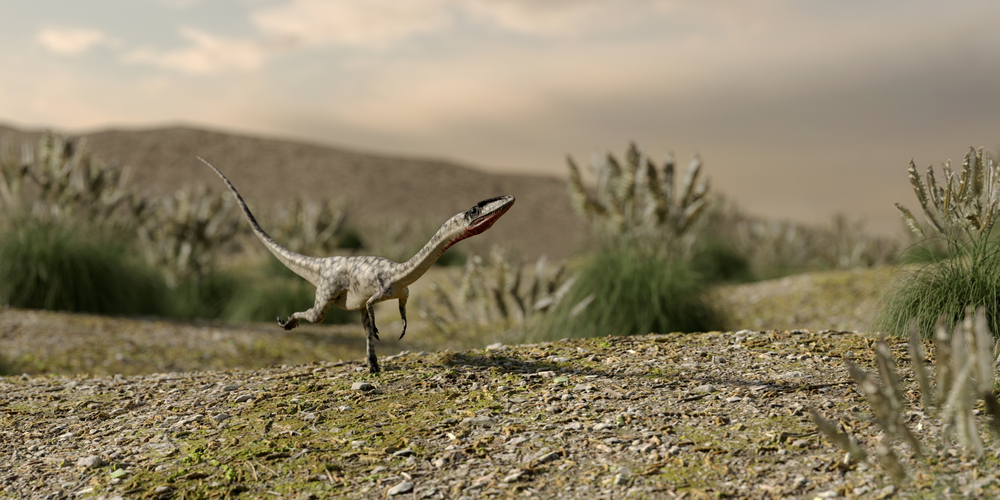
Studying the past in New Mexico has always resulted in rich finds about early human history and information about those species which were here millions of years before. One of these early species was the Coelophysis (see-low-FYS-iss), an early Triassic dinosaur which was named the New Mexico State Fossil by the State Legislature on March 17, 1981.
Coelophysis bauri first appeared in the Mid Triassic Period around 228 million years ago. The genus name, Coelophysis, means “hollow form” and refers to the hollow limb bones. It was a small dinosaur compared with those that have appeared on movie and TV screens. Coelophysis was up to almost 9 feet in length and about three feet high at the hips. It has a long tail which probably acted as a counterweight when it was running and maneuvering at high speeds. It was thought to have weighed around 50 pounds and some researchers have speculated that it was warm-blooded.
It is believed that the species was probably an opportunistic feeder, eating both live prey and scavenging on dead materials. The teeth are typical of carnivorous dinosaurs being blade-like, recurved and serrated and were continually replaced as they were damaged or worn out. Initially it was thought that the species was cannibalistic but recent studies have proven this to be incorrect.
The first remains of the fossil were found in 1881 and was classified by Edward D. Cope in 1889. In 1947 a large “graveyard” of Coelophysis was found at the Ghost Ranch in Rio Arriba County not far from the original find. It is thought that the mass burial was caused by a flash flood which trapped other species in addition to this one. The species has also been found in Arizona and possibly in Utah.
In addition to its long history in the geology of New Mexico, Coelophysis was also the second dinosaur in space! In 1998 a Coelophysis skull from the Carnegie Museum of Natural History accompanied the Space Shuttle Endeavour mission STS-89. It was also taken onto the Space Station Mir before returning to Earth.
